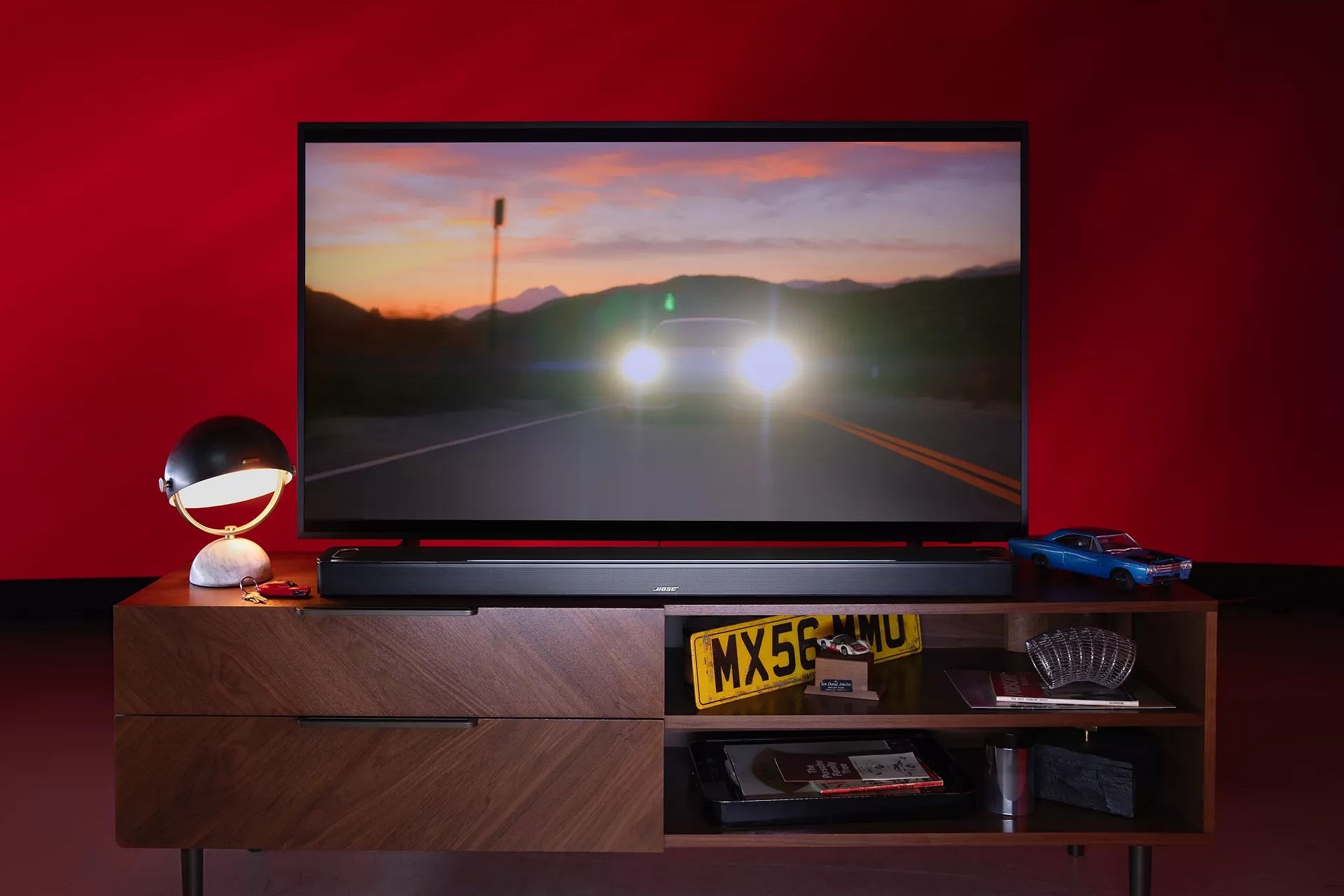Deciding where to position your soundbar, much like deciding where to place a subwoofer, can make a big difference in the sound that ultimately comes out of it. That's because the speakers and transducers inside fire in various directions to create a three-dimensional soundscape, with you at the center.
To get the best sound, you’ll want to avoid these placement faux pas:
• Recessed spaces. Don’t tuck your soundbar into a cabinet or recessed shelf. The upward-firing transducers’ sound waves will bounce against the top of the shelf or cabinet, preventing proper sound distribution and diminishing overall sound quality. Instead, position your soundbar on the edge of a surface or mount it on the wall to facilitate better sound projection.
• Too close to the TV. Whether mounting the soundbar or placing it on the stand, position it at least four inches away from the TV to prevent interference between the two devices.
• Too close to wireless devices. Keep any wireless devices at least a foot from the soundbar to prevent the signals from clashing. If you have a powerful, long-range Wi-Fi® router or Wi-Fi range extender, aim for at least 8 feet of distance between it and the soundbar; any closer might cause a humming or buzzing noise.
• On an unstable surface. Ensure the surface holding the soundbar is stable and level. Both of the soundbar's rubber feet should rest firmly and fully on the surface. An unsteady surface can lead to unwanted vibrations and affect sound quality.
• Improper height and direction. Your soundbar should face the listening area and match the ear level of your primary viewing position. Deviating from this can obstruct sound flow.
• In the line of fire. Excessive light and heat can harm electronics over time. Try to keep your soundbar away from direct contact with them or consider using a cover when not in use.
